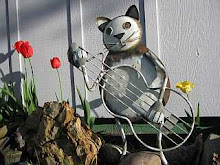Recently I saw a trivia question of interest.
What is a group of 12 or more cows known as?
A. Bale
B. Flink
C. Clowder
D. Bed
Answer: Flink.
Flink?! So... I have a flink of cows. ...Doesn't sound that impressive.
Looking into it further, flink
- while a real word from the 19th century - appears to have originated
as 12 or more cows on the internet back in 2002 and is not a real word
for 12 or more cattle.
http://www.word-detective.com/2011/03/flink/
The real answer....
Q: What is a group of cattle called?
A
group of cattle is called a herd, mob, drift, drove or team.
Historically, people who took cattle to market on the open range were
known as drovers.
Also... bale is a group of turtles. Clowder is a group of cats. Bed is a group of Oysters.
More animal grouping definitions: https://sciencebasedlife.wordpress.com/2011/09/26/what-do-you-call-a-group-of/
Also...
Q: How many teeth do cows have?
A:
Adult cows have 8 incisors on the bottom front of the mouth and 6
molars on the top and bottom on each side of the mouth, for a total of
32 teeth. The top front of the cow's mouth has a pad of skin and no
teeth.
Calves have 20 deciduous teeth and no deciduous
molars. The deciduous teeth of 75 percent of calves have all erupted at
birth. The deciduous teeth of calves are replaced by permanent teeth as
they grow. By 30 months of age, cows have lost all of their deciduous
teeth and have their permanent teeth in place.
Q: Are bulls color blind?
A: Bulls are color blind. Like all cows, bulls
have deuteranopia, meaning they cannot discern red and green colors and
instead see shades of yellow or blue. When it comes to bullfighting,
people are often under the impression that the red color of the
matador's cape is what angers the bull in the arena, and, symbolically,
red is a color that denotes anger or passion. In reality, the fluttering
movement of the cape is what agitates the bull and causes it to charge
the matador, not the color. The animals are more incited by white or
blue capes, but the red serves a particular purpose in the arena: the
color masks any blood that the creature may spray while injured.
-
Tuesday, February 23, 2016
Subscribe to:
Post Comments (Atom)


No comments:
Post a Comment